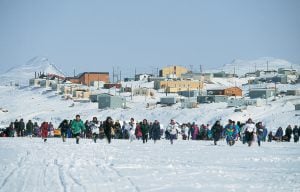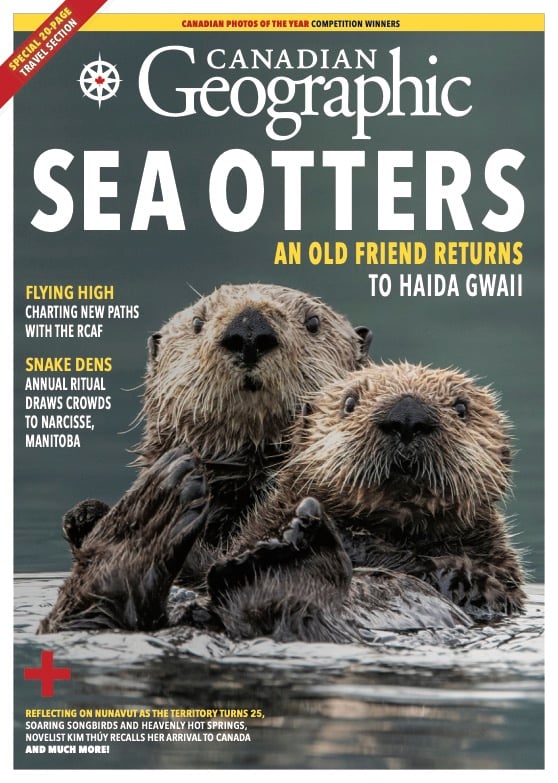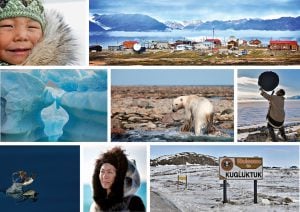
History
Throwback Thursday: Nunavut up and running
On April 1, 1999, Canada’s youngest population took control of its largest territory. Here’s how Canadian Geographic covered the story.
- 2880 words
- 12 minutes
Mapping
As the territory turns 25, a call for an Inuit self-determined future in Nunavut

We are patient. That’s a defining trait among Inuit. That patience has served us well for thousands of years as we not only survived the harsh conditions of the Arctic but thrived. It took more than three decades from the initial assertion that Inuit are a distinct Indigenous people within Canada to the creation of the Nunavut (Our Land) territory on April 1, 1999. Our patience was tested. Fortunately, when we exchanged Aboriginal title to all our traditional land in the Nunavut Settlement Area for the benefits set out in the Nunavut Agreement, we were able to secure certain rights to protect our way of life. Central to our argument was that we have always been here, well before it became convenient to Canada.
Now, with Nunavut’s devolution official, and Canada handing over ownership of Crown lands and natural resources to the territorial government, what will Our Land look like?
The relationship of Nuna (the land) and uummajuit (animals) is integral to Inuit well-being. Since time immemorial, we have overseen Nuna and the coastline using umiaq and qajaq. We devote our time to exploring, learning and adapting to our surroundings. Knowing Nuna means you can survive another day. But knowing Nuna will be different in the future. We will continue to adapt modern tools and modes of transportation, using them to help secure a sovereign Arctic for Inuit, Nunavummiut and the rest of Canada. I envision an Inuk as the captain of a coast guard ship monitoring our coast as we have done in umiaq for generations. Inuit will have expanded guardianship programs to monitor Nuna for its health and security. And Inuit will have final say on resource and exploration projects — knowing our surroundings will take on new meaning as we examine the resources within it.
As an Inuk, I am proud of our resilience in adapting to Canada’s colonial efforts. We fought tooth and nail to create this territory, protecting our way of life — the land, water and animals; our language and our culture; and our right to Inuit self-government. And over the next 25 years, that self-government will help guide us forward, with insights from our Elders and inspiration from our youth. We also fought to firmly install ourselves as active participants in the global economy, mainly through the arts and culture where our fashion, artwork and film have been recognized internationally, and we continue to expand commercial exports of key staples of our diet, such as Arctic char and turbot.
Since Canada has claimed the North as its own, there has been a perpetual push to send its value south. As part of the Nunavut Agreement, Inuit actually own just 18 per cent of the land in the territory — the Crown owns 80 percent. But as lands and resource rights are returned to Nunavut in the coming years, Inuit will expand our guardianship over Nuna. An Inuit self-determined future means we become the ultimate decision-makers.
As we bide our time above the breathing hole of the proverbial seal, Inuit patience will be rewarded. When we strike our catch, it will be with the same enthusiasm as that of our ancestors to secure the survival of our people. There is one certainty: Inuit will continue to stand up for ourselves and, through our patience and resilience, adapt to our surroundings. But in the future I foresee, I am hopeful that our surroundings will adapt to us. Inuit must and will secure ownership over Nunavut. It is, by definition, Our Land.

Are you passionate about Canadian geography?
You can support Canadian Geographic in 3 ways:

This story is from the March/April 2024 Issue

History
On April 1, 1999, Canada’s youngest population took control of its largest territory. Here’s how Canadian Geographic covered the story.

People & Culture
For generations, hunting, and the deep connection to the land it creates, has been a mainstay of Inuit culture. As the coastline changes rapidly—reshaping the marine landscape and jeopardizing the hunt—Inuit youth are charting ways to preserve the hunt, and their identity.

People & Culture
Natan Obed, president of Inuit Tapiriit Kanatami, on the idea of a Inuit-Crown relationship, Canada’s Inuit homelands and the role of Inuit in the world

People & Culture
Reflecting on 20 years of Canada’s newest territory, Nunavut